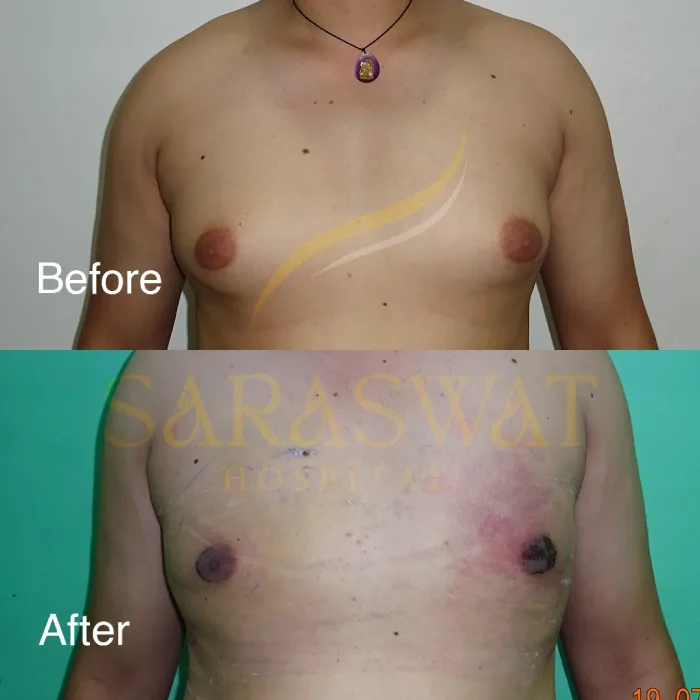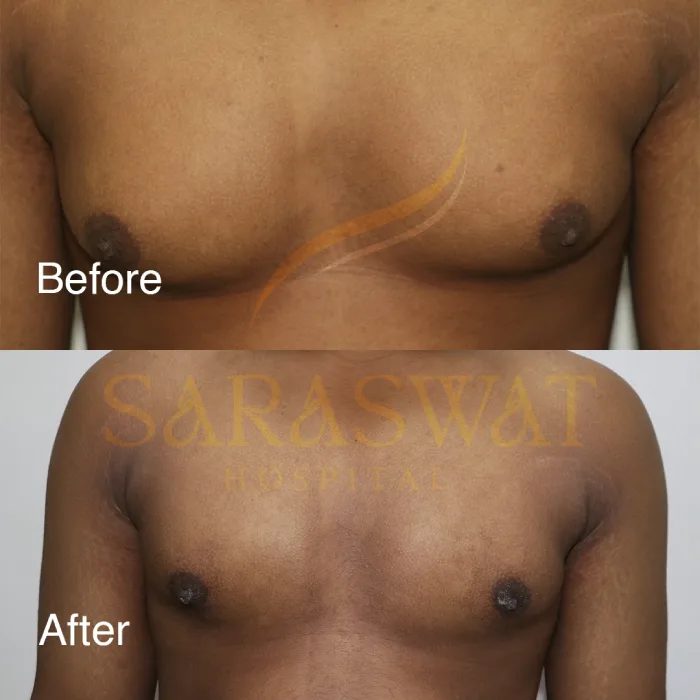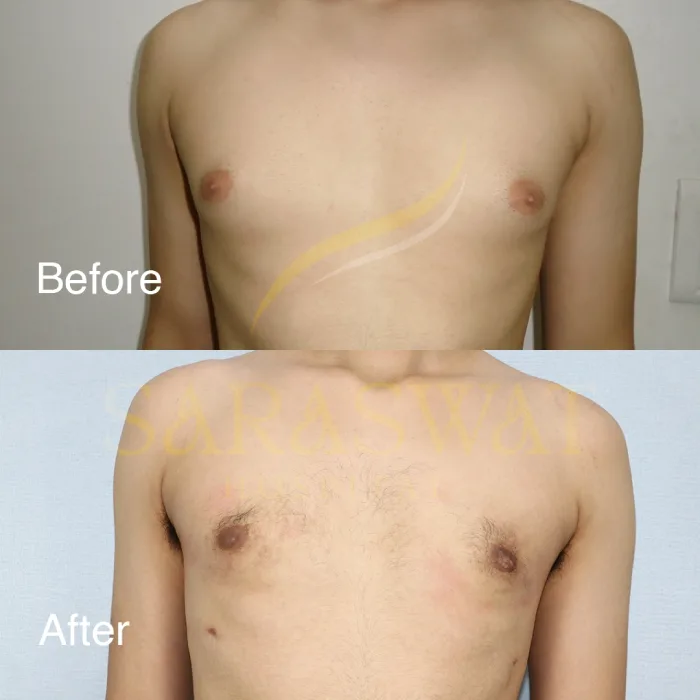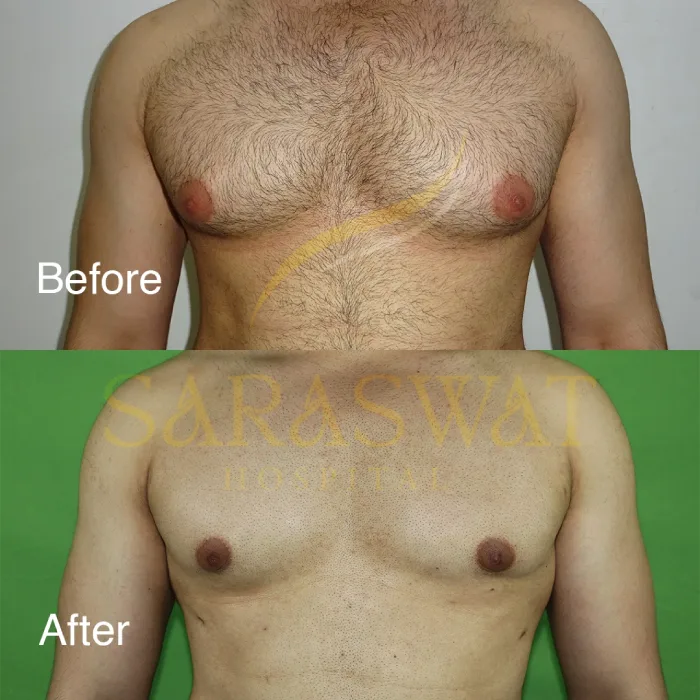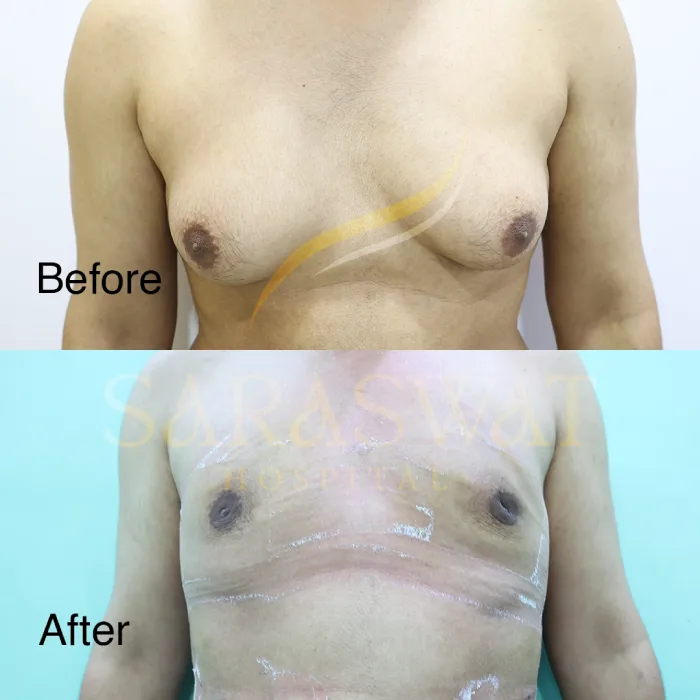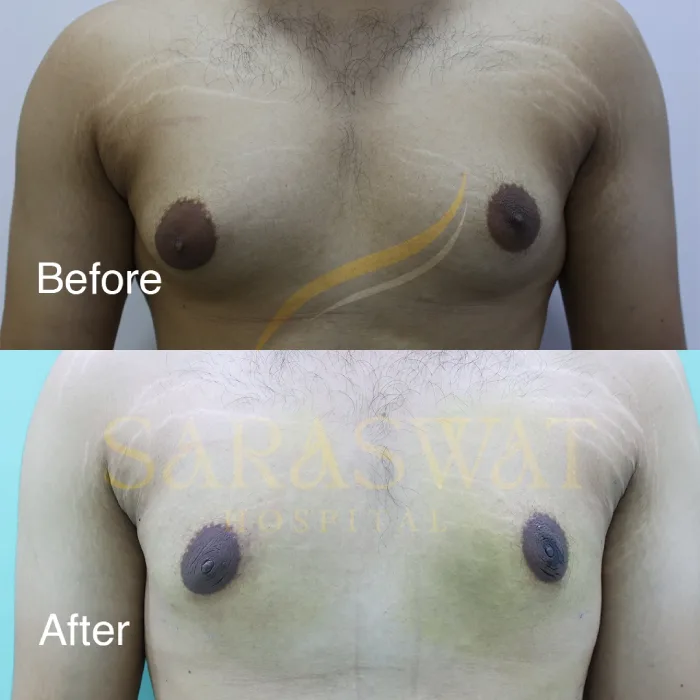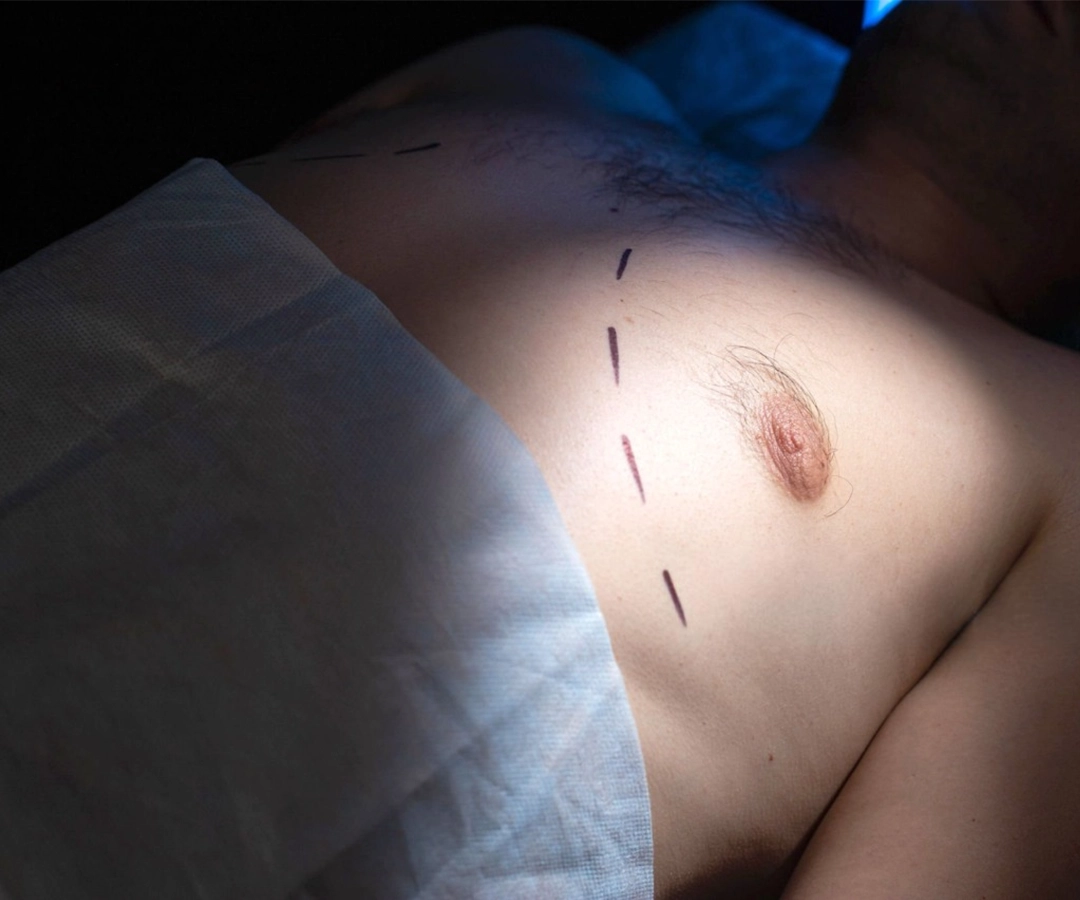
Gynecomastia Surgery in India
Gynecomastia Surgery in India is an extremely successful solution for men who are dealing with enlarged breast tissue. This condition is caused by hormonal imbalance, heredity, older age, or medications. This procedure is performed by certified surgeons using advanced techniques to offer better results. As India is emerging as a hotspot for cosmetic treatment, this procedure is gaining popularity to enhance appearance and help people boost their confidence.
What Is Gynecomastia Surgery?
Gynecomastia, or man boobs, is a common condition that causes the swelling of breasts in men. Breast tissue or gland enlargement may affect males of all ages, including newborns, older men, or boys during puberty. The term “Gynecomastia” is derived from the Greek words “Gynec” and “Mastos,” meaning male breasts. It can occur normally, caused by a hormonal imbalance, or due to the side effects of medication. It can happen to one or both breasts and is completely different from pseudo-gynecomastia. This condition can be improved with exercise, the right medication, or Gynecomastia surgery.
Pseudogynecomastia is caused by the presence of excessive fat in the breast tissue. Most cases of Gynecomastia do not require any treatment. However, it can be an aesthetic concern and cause distress.
Reasons of Gynecomastia
To plan the best Gynecomastia treatment, it is important to know the reasons that trigger such health conditions in men. Once the cause of man boobs is identified, it becomes easier for the Gynecomastia specialists to plan an effective treatment for the patient. Here are some of the reasons for gynecomastia:

Hormone Imbalance
Man boobs or Gynecomastia can be caused by an imbalance between the sex hormones testosterone and estrogen. Increased estrogen levels in men can cause breast tissue to grow. Usually, men have a much higher level of testosterone, which stops the estrogen from causing the breast tissue to grow. However, if the balance between these two hormones is interrupted, it can lead to the growth of breast tissue in men. Oftentimes, the cause of such hormonal imbalance cannot be diagnosed.

New Borns
Newborn babies, especially boys, often develop Gynecomastia. During the pregnancy period, estrogen passes through the placenta from the mother to the baby. This is a temporary thing and usually disappears a few weeks after birth.

Puberty
Between the ages of 12 and 14, boys experience a change in their hormone levels. If, for any reason, the level of testosterone drops, estrogen may trigger the growth in breast tissue. Gynecomastia at puberty may disappear as boys age and their hormone levels become more stable.
Older Age
Gynecomastia can hit men within the age range of 50 to 80 years. As men get older, their bodies produce less testosterone. Often, older men tend to have more body fat, which triggers more estrogen production. Such changes in hormone levels in mid-life can lead to excess breast tissue growth in men.
Other Possible Reasons
Some of the other possible reasons for Gynecomastia include:
- Side effects of medicines, such as anti-ulcer drugs or medicines for heart diseases.
- Some illegal drugs, such as cannabis or anabolic steroids.
- Misuse of alcohol.
- A health condition like liver disease or kidney failure.
- Infections or lumps in the testicles.
- Chronic renal failure.
- A rare genetic disorder—Klinefelter syndrome.
Symptoms of Gynecomastia
Generally, Gynecomastia is not a serious health problem. The symptoms of Gynecomastia include swelling or tenderness in one or both breast tissues. It may initially develop as a lump or fatty tissue around the nipples. Sometimes, these lumps develop unevenly.

Swollen Breasts
Swelling in the breast tissue in males is often characterized as Gynecomastia. The swelling of breast tissue can range from a small amount of tissue to a prominent enlargement.

Breast Discharge
In some cases, it can cause nipple discharge that can be milky or clear in color. One might experience discharge from one or both nipples

Breast tenderness
Gynecomastia can also cause breast tenderness or pain, and some patients may feel uncomfortable wearing tight clothes.

Gynecomastia vs. Fat
Gynecomastia, or enlarged breast tissue in men, can occur due to hormonal changes. However, it neither causes the accumulation of body fat nor is it related to obesity. An overweight person or someone who is obese may have fat around the body. It can cause enlarged breasts in men. This enlargement occurs due to fat rather than tissue growth.
If there is abnormal swelling, pain, nipple discharge, or a combination of these, you should seek medical help. For diagnosis, you can connect with internationally certified Gynecomastia surgeons who will examine your condition and offer effective treatment solutions.
When Does Gynecomastia Occur in Men?
Gynecomastia, or men’s boob, can occur in different phases of life, such as:
After Birth
Newborns, especially boys, may carry the effects of estrogen after birth. In the womb, babies receive estrogen from their mothers, and after birth, it may lead to the swelling of breasts. However, within a few weeks after birth, it goes away naturally.
Puberty
During the puberty phase, men (and women) experience a change in their hormone levels. The change in hormone levels often causes Gynecomastia during puberty. However, it tends to go away within a few months or years.
Mid-Life
Aging can also cause Gynecomastia in men, especially within the age group of 50 to 80 years. Nearly 30% of men experience Gynecomastia during their lives. It may cause anxiety, psychological discomfort, and fear of serious diseases. Early diagnosis can help a patient get the best treatments and avoid other problems like stress, reduced confidence levels, and so on.
Diagnosis of Gynecomastia
To plan the best treatment for Gynecomastia, the first and most important step is proper diagnosis. You should consult with a Gynecomastia specialist to get the most effective treatment solution. A comprehensive approach should be followed for complete diagnosis. The diagnosis procedure includes checking physical symptoms, a breast examination (mammogram), a review of all current medications, and analyzing the complete medical history of the patient.
Gynecomastia is often identified by a firm but a rubbery disk of tissue located under the nipples. It can be moved within the breast tissue. Doctors can characterize it by the following signs:
- Excess localized fat
- Excess breast skin
- Excessive development of glandular tissue
- Bilateral or unilateral presence
When Does Gynecomastia Occur in Men?
Gynecomastia, or men’s boob, can occur in different phases of life, such as:
After Birth
Newborns, especially boys, may carry the effects of estrogen after birth. In the womb, babies receive estrogen from their mothers, and after birth, it may lead to the swelling of breasts. However, within a few weeks after birth, it goes away naturally.
Puberty
During the puberty phase, men (and women) experience a change in their hormone levels. The change in hormone levels often causes Gynecomastia during puberty. However, it tends to go away within a few months or years.
Mid-Life
Aging can also cause Gynecomastia in men, especially within the age group of 50 to 80 years. Nearly 30% of men experience Gynecomastia during their lives. It may cause anxiety, psychological discomfort, and fear of serious diseases. Early diagnosis can help a patient get the best treatments and avoid other problems like stress, reduced confidence levels, and so on.
Diagnosis of Gynecomastia
To plan the best treatment for Gynecomastia, the first and most important step is proper diagnosis. You should consult with a Gynecomastia specialist to get the most effective treatment solution. A comprehensive approach should be followed for complete diagnosis. The diagnosis procedure includes checking physical symptoms, a breast examination (mammogram), a review of all current medications, and analyzing the complete medical history of the patient.
Gynecomastia is often identified by a firm but a rubbery disk of tissue located under the nipples. It can be moved within the breast tissue. Doctors can characterize it by the following signs:
- Excess localized fat
- Excess breast skin
- Excessive development of glandular tissue
- Bilateral or unilateral presence
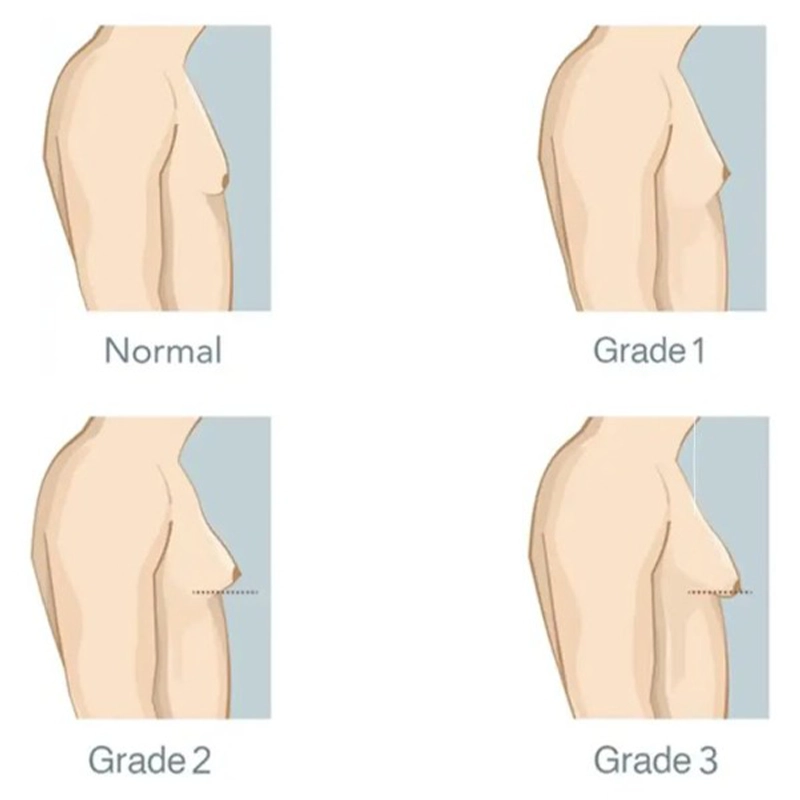
Available Gynecomastia Surgery
Medications or a procedure can be suggested to correct the condition of Gynecomastia that causes discomfort or social embarrassment. Various treatment options are available, including Gynecomastia surgery. However, only a specialist can recommend the best treatment after diagnosis.
Medications: Doctors may prescribe medications that can correct your hormone levels, such as raloxifene or tamoxifen. Consult a doctor to know your dosage.
Counseling: Gynecomastia can make a man feel more self-conscious. If you feel your Gynecomastia condition is making you depressed or too self-conscious to participate in any social activities, consult a counselor as soon as possible.
Gynecomastia Surgery
Gynecomastia surgery is a male chest reduction procedure designed for Gynecomastia patients. It is a cosmetic surgery, an elective procedure. An expert plastic surgeon may help to achieve the appearance of a flatter chest along with enhanced pectoral contours by efficiently removing fat, breast tissues, and skin from the area.
Gynecomastia surgery can also help to improve the size and position of the dark skin around the nipples. This procedure also reduces the excess skin and enhances the overall appearance. At Saraswat Hospital, we mainly follow two techniques—mastectomy and liposuction-assisted mastectomy—for better results. We administer either one or a combination of two techniques based on the requirement.
Mastectomy
It is a surgical procedure to remove all breast tissues from a breast to treat or prevent breast cancer. Plastic surgeons often recommend it as a treatment for Gynecomastia. A mastectomy can help reduce breast size in men. To select the best procedure, doctors need to analyze various factors, including the health condition of the patient, the size of the tissue, current medication, etc.
Liposuction-assisted Mastectomy
Liposuction-assisted mastectomy involves removing the fat in the chest tissue. During the procedure, plastic surgeons make an incision on the margin of the areola complex, and the suction removes the excess fat from the body before removing the excess glandular breast tissues surgically. The entire procedure is performed under general anesthesia. This is an outpatient procedure, which means a patient can go home after the procedure on the same day.
Who Should Go for the Gynecomastia Surgery?
Gynecomastia may typically occur in both breasts. It is also seen in patients with unilateral or asymmetric breasts. Patients can undergo a self-breast examination. During self-examination, if a patient encounters a tender but firm, palpable, almost disc-like tissue beneath the nipples, it can be a sign of Gynecomastia. One should seek medical help for a proper diagnosis of the condition. Doctors may suggest medical tests like mammograms and MRIs to determine the causes and effects.
Eligible Candidates for Gynecomastia Surgery
1. A person whose condition cannot be improved with alternative medications.
2. A person who is healthy and does not have a life-threatening disease.
3. A person who does not have any medical condition that can impair the recovery process.
4. A person who does not drink alcohol or smoke.
5. A person with a positive outlook on the procedure and who wants to achieve specific goals.
6. A person whose breast development is stabilized (males older than 13 years old).
Gynecomastia Surgery
Gynecomastia surgery is a male chest reduction procedure designed for Gynecomastia patients. It is a cosmetic surgery, an elective procedure. An expert plastic surgeon may help to achieve the appearance of a flatter chest along with enhanced pectoral contours by efficiently removing fat, breast tissues, and skin from the area.
Gynecomastia surgery can also help to improve the size and position of the dark skin around the nipples. This procedure also reduces the excess skin and enhances the overall appearance. At Saraswat Hospital, we mainly follow two techniques—mastectomy and liposuction-assisted mastectomy—for better results. We administer either one or a combination of two techniques based on the requirement.
Mastectomy
It is a surgical procedure to remove all breast tissues from a breast to treat or prevent breast cancer. Plastic surgeons often recommend it as a treatment for Gynecomastia. A mastectomy can help reduce breast size in men. To select the best procedure, doctors need to analyze various factors, including the health condition of the patient, the size of the tissue, current medication, etc.
Liposuction-assisted Mastectomy
Liposuction-assisted mastectomy involves removing the fat in the chest tissue. During the procedure, plastic surgeons make an incision on the margin of the areola complex, and the suction removes the excess fat from the body before removing the excess glandular breast tissues surgically. The entire procedure is performed under general anesthesia. This is an outpatient procedure, which means a patient can go home after the procedure on the same day.
Watch this video for a better understanding of how we perform Gynecomastia surgery at the Saraswat Hospital:
Who Should Go for the Gynecomastia Surgery?
Gynecomastia may typically occur in both breasts. It is also seen in patients with unilateral or asymmetric breasts. Patients can undergo a self-breast examination. During self-examination, if a patient encounters a tender but firm, palpable, almost disc-like tissue beneath the nipples, it can be a sign of Gynecomastia. One should seek medical help for a proper diagnosis of the condition. Doctors may suggest medical tests like mammograms and MRIs to determine the causes and effects.
Eligible Candidates for Gynecomastia Surgery
- A person whose condition cannot be improved with alternative medications.
- A person who is healthy and does not have a life-threatening disease.
- A person who does not have any medical condition that can impair the recovery process.
- A person who does not drink alcohol or smoke.
- A person with a positive outlook on the procedure and who wants to achieve specific goals.
- A person whose breast development is stabilized (males older than 13 years old).
The Procedure of Gynecomastia Surgery
Gynecomastia surgery, or male breast reduction surgery, is an effective way to reduce the size of male breasts and achieve enhanced chest contours. It helps to achieve a more masculine appearance and boosts self-esteem.
What Happens During the Procedure?
For Gynecomastia, there are mainly two procedures—mastectomy and liposuction-assisted mastectomy. After a complete diagnosis of the condition, an expert plastic surgeon can suggest the most suitable procedure.
For patients who have excess skin, fat, or tissue, our Gynecomastia specialist often recommends excision. This procedure involves the use of a larger incision to remove the breast tissue. It is also effective in repositioning the nipples and areola. The pattern, length, and location of the incision depend on the size of the breasts and the desired look of the patient.
Often, some patients need a combination of two procedures: excision and liposuction. Only after a complete diagnosis and review of your overall health, the doctor determine the right procedure for you. The patient gets general anesthesia before the procedure. The procedure is painless, requires less downtime, and ensures fast recovery.
What Happens After the Procedure?
It is an outpatient procedure, meaning the patient can go back home after the procedure on the same day. A patient should have someone to drive him home after the surgery. Our surgeons will guide you accordingly regarding aftercare. You may need certain medications to avoid pain, swelling, and infection.
At the Saraswat Hospital in Agra, we always use internationally imported, high-grade equipment. All the tools we use are sterile to prevent the risk of infection. Our state-of-the-art procedure ensures quick surgery with minimal downtime. After the recovery, there will be zero to minimal scars, and no one can understand whether you have undergone any procedure.
The Recovery Process
This cosmetic procedure has a direct effect on the way someone looks. That’s why it is crucial to consult Gynecomastia experts to take a close look at the recovery process. We have a team of well-trained and skilled experts who will look after the recovery period. Patients can stay in close contact with them and get the required guidance. Generally, the initial recovery after a Gynecomastia surgery is one to two weeks. To get the best results, you have to follow some instructions, such as:
- During the healing phase, you must avoid strenuous activities.
- Wearing a compression vest is helpful for the retraction of the skin and for preventing fluid accumulation.
- Avoid alcohol and smoking for a few weeks after the Gynecomastia surgery.
- Resume normal activities only after two weeks post-surgery.
Precautions Before the Surgery
To ensure the best results from male breast reduction surgery, one must follow all precautions suggested by the Gynecomastia specialist.
- Quit smoking at least two weeks before the procedure.
- Don’t drink alcohol for at least one week before the surgery.
- Stop taking blood thinners before the surgery and discuss it in detail with our experts.
Precautions You Must Take After the Surgery
- Avoid wearing clothes that may irritate the wound.
- Wear a compression garment.
- Don’t shower until the bandages are removed by the doctors.
- Don’t expose the treatment area to direct sunlight for at least six weeks.
- Do not perform strenuous games or exercises for at least two weeks.
- Follow all instructions and take the medications recommended by your Gynecomastia specialists.
The Procedure of Gynecomastia Surgery
Gynecomastia surgery, or male breast reduction surgery, is an effective way to reduce the size of male breasts and achieve enhanced chest contours. It helps to achieve a more masculine appearance and boosts self-esteem.
What Happens During the Procedure?
For Gynecomastia, there are mainly two procedures—mastectomy and liposuction-assisted mastectomy. After a complete diagnosis of the condition, an expert plastic surgeon can suggest the most suitable procedure.
For patients who have excess skin, fat, or tissue, our Gynecomastia specialist often recommends excision. This procedure involves the use of a larger incision to remove the breast tissue. It is also effective in repositioning the nipples and areola. The pattern, length, and location of the incision depend on the size of the breasts and the desired look of the patient.
Often, some patients need a combination of two procedures: excision and liposuction. Only after a complete diagnosis and review of your overall health, the doctor determine the right procedure for you. The patient gets general anesthesia before the procedure. The procedure is painless, requires less downtime, and ensures fast recovery.
What Happens After the Procedure?
It is an outpatient procedure, meaning the patient can go back home after the procedure on the same day. A patient should have someone to drive him home after the surgery. Our surgeons will guide you accordingly regarding aftercare. You may need certain medications to avoid pain, swelling, and infection.
At the Saraswat Hospital in Agra, we always use internationally imported, high-grade equipment. All the tools we use are sterile to prevent the risk of infection. Our state-of-the-art procedure ensures quick surgery with minimal downtime. After the recovery, there will be zero to minimal scars, and no one can understand whether you have undergone any procedure.
The Recovery Process
This cosmetic procedure has a direct effect on the way someone looks. That’s why it is crucial to consult Gynecomastia experts to take a close look at the recovery process. We have a team of well-trained and skilled experts who will look after the recovery period. Patients can stay in close contact with them and get the required guidance. Generally, the initial recovery after a Gynecomastia surgery is one to two weeks. To get the best results, you have to follow some instructions, such as:
- During the healing phase, you must avoid strenuous activities.
- Wearing a compression vest is helpful for the retraction of the skin and for preventing fluid accumulation.
- Avoid alcohol and smoking for a few weeks after the Gynecomastia surgery.
- Resume normal activities only after two weeks post-surgery.
Precautions Before the Surgery
To ensure the best results from male breast reduction surgery, one must follow all precautions suggested by the Gynecomastia specialist.
- Quit smoking at least two weeks before the procedure.
- Don’t drink alcohol for at least one week before the surgery.
- Stop taking blood thinners before the surgery and discuss it in detail with our experts.
Precautions You Must Take After the Surgery
- Avoid wearing clothes that may irritate the wound.
- Wear a compression garment.
- Don’t shower until the bandages are removed by the doctors.
- Don’t expose the treatment area to direct sunlight for at least six weeks.
- Do not perform strenuous games or exercises for at least two weeks.
- Follow all instructions and take the medications recommended by your Gynecomastia specialists.
Does Gynecomastia Surgery Work?
Gynecomastia surgery or male breast reduction surgery is an effective treatment for men who have excess breast tissue or enlarged breasts. It helps to remove excess tissue and reshape the chest area, ensuring a more masculine appearance. However, the success of this procedure also depends on the skills of the surgeon.
At the Saraswat Hospital in Agra, you get treatment from a gold-medallist cosmetic and plastic surgeon, Dr. Satya Saraswat. He has nearly 20 years of experience and has successfully performed more than 13,000 cosmetic surgeries. He is also a member of international institutes like the International Society of Aesthetic Plastic Surgery (ISAPS) and the American Society of Plastic Surgery (ASPS).
Risks of Gynecomastia Surgery
If done correctly, a patient can avoid all risks associated with Gynecomastia surgery. A patient should get treatment from internationally certified doctors with years of experience. Apart from this, it is also important to choose a clinic that has state-of-the-art equipment and technologies to assist with the surgical procedure. The following are the risks of Gynecomastia Surgery:
- Anesthesia risk
- Bleeding
- Blood clots
- Breast shape irregularities
- Deep vein thrombosis
- Cardiac and pulmonary complications
- Unfavorable scarring
- Fluid accumulation
- Persistent pain
- Possibility of revision surgery
- Breast asymmetry
An experienced Gynecomastia specialist like Dr. Satya Saraswat can help you achieve your desired results and prevent all these potential risks. To get satisfactory results, consult Dr. Satya Saraswat immediately. Call us at +919258386320 or +919690039999 for appointment booking and further details.
Frequently Asked Questions (FAQ) about Gynecomastia
Yes, Gynecomastia surgery or male breast reduction surgery offers permanent results. The breast tissue removed via the surgical procedure won’t return on its own. The patient should make some lifestyle modifications to sustain the results for a lifetime. Future weight gain may affect the results of the surgery. Consult in detail with our team to know how you can maintain the best results for a lifetime.
A patient might feel sore for the first few days after the surgery. The tenderness or discomfort will get better within one to two weeks. Most patients can resume their normal activities in about two weeks.
If Gynecomastia isn’t treated, it may slightly increase the risk of breast cancer. With Gynecomastia, the risk of developing male breast cancer is minimal. In most cases, it resolves on its own with minimal treatment. However, if it has become an aesthetic concern or you are experiencing issues like pain, swelling, and nipple discharge, you should consult with a Gynecomastia specialist as soon as possible.
Often, doctors prescribe medications to treat Gynecomastia that increase the levels of testosterone. However, whether the increased testosterone level will help you get rid of Gynecomastia or not can be decided only by a Gynecomastia specialist.
First, you need to consult with a Gynecomastia specialist to learn the treatment procedure. At the Saraswat Hospital in Agra, our expert team will guide you accordingly. They will inform you of the dos and don’ts before the procedure. However, you should follow some general instructions, like refraining from smoking at least two weeks before the procedure. Do not take medications like blood thinners, and discuss your current medications with our Gynecomastia surgeon. For any kind of query, you can connect with us whenever you want.
Certifications & Partnerships







The Saraswat Hospital Credentials

17000 +
Happy Clients

20 +
Years of Experience
98%
Hair Growth Rate

1500 +
Cases of Grade 5/6

4.9
Google Ratings
EXCELLENTTrustindex verifies that the original source of the review is Google. Best place in agra for skin and hair treatment.Trustindex verifies that the original source of the review is Google. Best centre for hair treatment in agra. Thank you sir and team.Trustindex verifies that the original source of the review is Google. It was very nice experience at the Saraswat Hospital,Agra. Polite and caring staff. Always available. Dr sir feels like our family member. Neat and clean rooms. Been there for son's cleft lip surgery. Fully satisfied with the results.Trustindex verifies that the original source of the review is Google. India no. 1 hair transplant clinic. Excellent team work and very helpful doctors.Trustindex verifies that the original source of the review is Google. Overall experience 2 year is good and staff behaviour also good. Thnk you Dr Saraswat and team.Trustindex verifies that the original source of the review is Google. It's very good clinic and very good service.Trustindex verifies that the original source of the review is Google. It has been great experience not only with the treatment but also with the overall service right from the reception to the doctor.Trustindex verifies that the original source of the review is Google. Had my first session of PRP today and it went great. Overall it was a wonderful experience...Verified by TrustindexTrustindex verified badge is the Universal Symbol of Trust. Only the greatest companies can get the verified badge who has a review score above 4.5, based on customer reviews over the past 12 months. Read more

